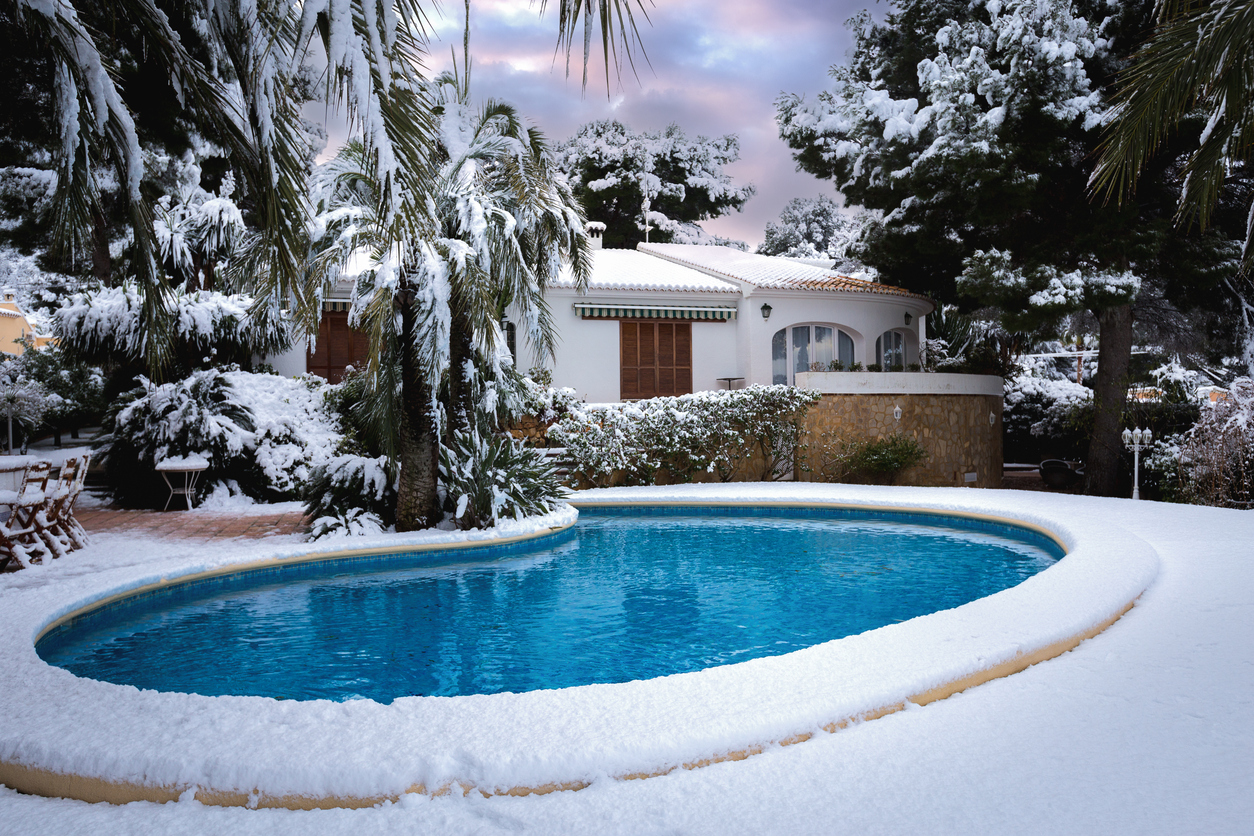Winter Pool Maintenance for Warmer Climates

For pool owners in warmer climates, winter doesn't mean closing the pool entirely. While you may not use it as often, skipping maintenance during cooler months can lead to problems like algae growth, imbalanced water chemistry, and equipment damage. Winter care in these regions isn't about shutting down - it's about adjusting your routine to match the lower usage while keeping the water clean and balanced.
Why Winter Pool Maintenance Matters
Even if temperatures rarely drop below freezing, neglecting your pool for months at a time can cause long-term issues. Algae can still thrive in mild winters, especially if chlorine levels drop too low. Water circulation slows when pumps run for fewer hours, which can lead to localized imbalances where algae and bacteria start forming. If water chemistry is ignored, pH and alkalinity can drift out of range, leading to scaling on surfaces and equipment corrosion.
By making a few seasonal adjustments, you can keep your pool in top shape without needing a full reopening process in spring.
Adjusting Your Pool Care Routine for Winter
During the cooler months, your pool's needs change. The first adjustment is to reduce filtration hours since lower temperatures slow down the rate at which bacteria and algae grow. If you normally run your pump 8-12 hours per day in summer, scaling back to 4-6 hours per day in winter is usually sufficient. However, don't cut it too short - water still needs to circulate regularly to prevent dead spots and chemical imbalances.
Water chemistry is easier to maintain in winter since chlorine isn't burned off as quickly by the sun. However, it's still important to test and balance your water at least once per week. Total alkalinity and pH tend to drift upward in colder weather, so be prepared to adjust as needed. Lower chlorine demand also means you may not need to add as much sanitizer, but keeping levels between 1-3 ppm prevents algae from taking hold.
If you use a saltwater system, keep in mind that salt cells become less efficient in cold temperatures. Some generators even shut off when the water gets too cold, so you may need to supplement with liquid chlorine or chlorine tablets until the weather warms up.
Keeping Algae Under Control in Winter
One common mistake in warm-weather climates is assuming that algae can't grow in cooler water. While it grows more slowly than in summer, it doesn't stop entirely, especially if chlorine levels drop or circulation is weak. Brushing the pool walls once every two weeks prevents buildup, and adding a winter algaecide can provide extra protection.
A pool cover can also help reduce algae risk by keeping out leaves and debris that introduce organic material. Even if you don't use a full safety cover, a solar cover or leaf net can minimize contamination.
Winter Equipment Maintenance
Colder temperatures may not require full winterization, but keeping your equipment in good shape is still essential. Check for leaks, worn seals, or unusual pump noises that might indicate a problem. If you use a pool heater, this is a great time to flush the system and inspect for scale buildup.
Even if you aren't running your pool heater, it's good practice to turn it on once every few weeks to ensure it remains in working order. If there's a rare overnight freeze warning, running your pump continuously can prevent water from freezing inside pipes.
Winter pool maintenance in warm climates is about balance - reducing unnecessary energy use while keeping water chemistry in check. By running the pump for fewer hours, adjusting chlorine levels, and brushing occasionally, you can keep your pool in top condition with minimal effort. When spring arrives, you'll be ready to dive right back in without a lengthy reopening process.
